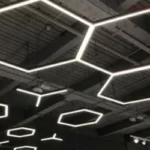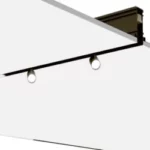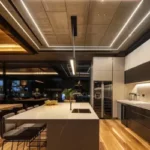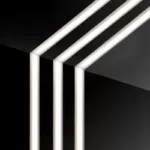[et_pb_section bb_built=”1″ inner_width=”auto” inner_max_width=”1080px”][et_pb_row][et_pb_column type=”3_5″ custom_padding__hover=”|||” custom_padding=”|||”][et_pb_text _builder_version=”3.27.4″ text_text_shadow_horizontal_length=”text_text_shadow_style,%91object Object%93″ text_text_shadow_horizontal_length_tablet=”0px” text_text_shadow_vertical_length=”text_text_shadow_style,%91object Object%93″ text_text_shadow_vertical_length_tablet=”0px” text_text_shadow_blur_strength=”text_text_shadow_style,%91object Object%93″ text_text_shadow_blur_strength_tablet=”1px” link_text_shadow_horizontal_length=”link_text_shadow_style,%91object Object%93″ link_text_shadow_horizontal_length_tablet=”0px” link_text_shadow_vertical_length=”link_text_shadow_style,%91object Object%93″ link_text_shadow_vertical_length_tablet=”0px” link_text_shadow_blur_strength=”link_text_shadow_style,%91object Object%93″ link_text_shadow_blur_strength_tablet=”1px” ul_text_shadow_horizontal_length=”ul_text_shadow_style,%91object Object%93″ ul_text_shadow_horizontal_length_tablet=”0px” ul_text_shadow_vertical_length=”ul_text_shadow_style,%91object Object%93″ ul_text_shadow_vertical_length_tablet=”0px” ul_text_shadow_blur_strength=”ul_text_shadow_style,%91object Object%93″ ul_text_shadow_blur_strength_tablet=”1px” ol_text_shadow_horizontal_length=”ol_text_shadow_style,%91object Object%93″ ol_text_shadow_horizontal_length_tablet=”0px” ol_text_shadow_vertical_length=”ol_text_shadow_style,%91object Object%93″ ol_text_shadow_vertical_length_tablet=”0px” ol_text_shadow_blur_strength=”ol_text_shadow_style,%91object Object%93″ ol_text_shadow_blur_strength_tablet=”1px” quote_text_shadow_horizontal_length=”quote_text_shadow_style,%91object Object%93″ quote_text_shadow_horizontal_length_tablet=”0px” quote_text_shadow_vertical_length=”quote_text_shadow_style,%91object Object%93″ quote_text_shadow_vertical_length_tablet=”0px” quote_text_shadow_blur_strength=”quote_text_shadow_style,%91object Object%93″ quote_text_shadow_blur_strength_tablet=”1px” header_text_shadow_horizontal_length=”header_text_shadow_style,%91object Object%93″ header_text_shadow_horizontal_length_tablet=”0px” header_text_shadow_vertical_length=”header_text_shadow_style,%91object Object%93″ header_text_shadow_vertical_length_tablet=”0px” header_text_shadow_blur_strength=”header_text_shadow_style,%91object Object%93″ header_text_shadow_blur_strength_tablet=”1px” header_2_text_shadow_horizontal_length=”header_2_text_shadow_style,%91object Object%93″ header_2_text_shadow_horizontal_length_tablet=”0px” header_2_text_shadow_vertical_length=”header_2_text_shadow_style,%91object Object%93″ header_2_text_shadow_vertical_length_tablet=”0px” header_2_text_shadow_blur_strength=”header_2_text_shadow_style,%91object Object%93″ header_2_text_shadow_blur_strength_tablet=”1px” header_3_text_shadow_horizontal_length=”header_3_text_shadow_style,%91object Object%93″ header_3_text_shadow_horizontal_length_tablet=”0px” header_3_text_shadow_vertical_length=”header_3_text_shadow_style,%91object Object%93″ header_3_text_shadow_vertical_length_tablet=”0px” header_3_text_shadow_blur_strength=”header_3_text_shadow_style,%91object Object%93″ header_3_text_shadow_blur_strength_tablet=”1px” header_4_text_shadow_horizontal_length=”header_4_text_shadow_style,%91object Object%93″ header_4_text_shadow_horizontal_length_tablet=”0px” header_4_text_shadow_vertical_length=”header_4_text_shadow_style,%91object Object%93″ header_4_text_shadow_vertical_length_tablet=”0px” header_4_text_shadow_blur_strength=”header_4_text_shadow_style,%91object Object%93″ header_4_text_shadow_blur_strength_tablet=”1px” header_5_text_shadow_horizontal_length=”header_5_text_shadow_style,%91object Object%93″ header_5_text_shadow_horizontal_length_tablet=”0px” header_5_text_shadow_vertical_length=”header_5_text_shadow_style,%91object Object%93″ header_5_text_shadow_vertical_length_tablet=”0px” header_5_text_shadow_blur_strength=”header_5_text_shadow_style,%91object Object%93″ header_5_text_shadow_blur_strength_tablet=”1px” header_6_text_shadow_horizontal_length=”header_6_text_shadow_style,%91object Object%93″ header_6_text_shadow_horizontal_length_tablet=”0px” header_6_text_shadow_vertical_length=”header_6_text_shadow_style,%91object Object%93″ header_6_text_shadow_vertical_length_tablet=”0px” header_6_text_shadow_blur_strength=”header_6_text_shadow_style,%91object Object%93″ header_6_text_shadow_blur_strength_tablet=”1px” box_shadow_horizontal_tablet=”0px” box_shadow_vertical_tablet=”0px” box_shadow_blur_tablet=”40px” box_shadow_spread_tablet=”0px” z_index_tablet=”500″]
WHAT IS COLOR TEMPERATURE?
Lighting Color Temperature:
Color temperature is measured in degrees Kelvin (K). The color temperature of a lamp (bulb) describes how the light appears when the human eye looks directly at the illuminated bulb.
HOW IS COLOR TEMPERATURE MEASURED?
Lighting Color temperature is measured by a unit called the Kelvin (K). The Kelvin thermodynamic temperature scale is defined so that absolute zero is 0 kelvins (K). (Note: The Celsius and Fahrenheit scales are defined so that absolute zero is −273.15 °C or −459.67 °F). Imagine heating a bar of steel and observing the color of the bar at increasing temperatures. At some point the bar will appear to glow a dull red. As heat is added, the dull red turns to yellow, then to white, then to bluish white, finally to blue.
HOW COLOR TEMPERATURE WORKS
A light bulb that produces light perceived as yellowish white will have a color temperature of around 2700K. As the color temperature increases to 3000K – 3500K, the color of the light appears less yellow and more white. When the color temperature is 5000K or higher the light produced appears bluish white. The color temperature of daylight varies, but is often in the 5000K to 7000K range.
2700-2800K — WARM LIGHT
When the desired lighting effect is “warm”, use light sources in the 2700K – 2800K range. Most common incandescent light bulbs will produce light in this color temperature range. An exception is the incandescent light bulb with a neodymium coating. The neodymium filters out the yellow and red wavelengths of the visible spectrum leaving predominately blue wavelengths. So even though neodymium light bulbs have a 2800K color temperature, the light they produce appears to be bluer – similar to daylight and to other light bulbs that product light with color temperatures in the 5000K or higher range.
3500-4000K — NEUTRAL BRIGHT LIGHT
When the desired effect is neutral or bright white, use light sources in the 3000K – 3500K range. For a slightly bluer, “cooler” effect use 4000K.
5000-6500K — SIMULATE DAYLIGHT
Daylight color temperature at noon is 5600K, but sunlight color temperature can vary widely based on time of day and weather conditions. To give the perception of daylight (bluish white light), use light sources with a color temperature of 5000K or higher.
KEY DESIGN ISSUE
When deciding on the best light bulb for a particular application, one consideration not to overlook is the appearance of the light as perceived by the people using the space. For example, many people will find a formal dining room more appealing with “warmer” appearing light, while for a large, open-plan office “neutral to cool white” appearing light is the better choice. Color temperature designations of light bulbs can be confusing. Sometimes you’ll see subjective terms such as “warm white” or “cool white.” Other times, the quantitative Kelvin temperature number will be used: 2700K (warm white), 4100K (cool white). Here are some approximate reference points: candle light is 1800K (warm yellow), a standard is 2700K (warm white), lights in a portrait photo studio are 3200K (neutral white), fluorescent lights in a classroom or office are often 4100K (cool white), daylight with a thin overcast sky is 6500K (bluish, white light). Most incandescent and halogen bulbs are in the Kelvin range 2700K-3000K. Fluorescent, metal halide and LED bulbs can be purchased with color temperature options from 2700K to 6500K.
[/et_pb_text][/et_pb_column][et_pb_column type=”2_5″ custom_padding__hover=”|||” custom_padding=”|||”][et_pb_image _builder_version=”3.15″ src=”https://arendlighting.com/wp-content/uploads/2018/10/color-temperature.jpg” align_last_edited=”on|desktop” align_tablet=”center” /][/et_pb_column][/et_pb_row][/et_pb_section]






